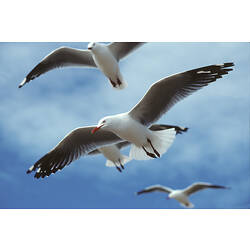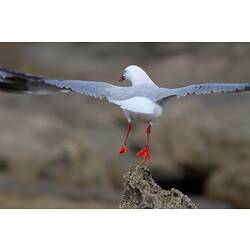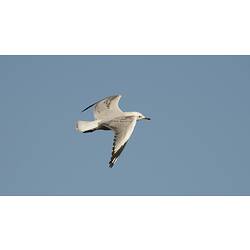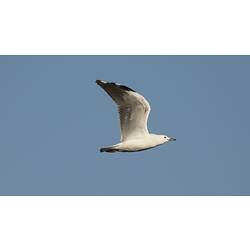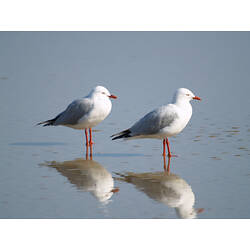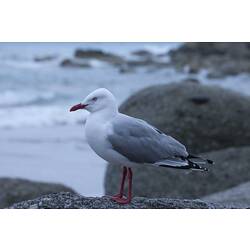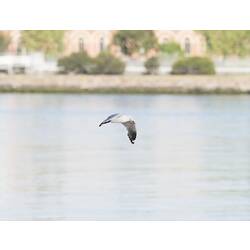General Description
Head, neck and underparts white, upper body grey, wings grey with black tips. Adult birds have bright red legs, bill and eye rings. The red of the bill becomes brighter with age.
Biology
Silver Gulls are the most common type of gull found in urban and bay areas. In an area without humans, the Silver Gull's diet consists of insects, worms, fish and crustaceans. In areas of human habitation they also scavenge for leftovers and garbage and reach nuisance-levels around dumps. Silver Gulls tend to stay close to land, avoiding travelling far out to sea. They sometimes form large flocks around fishing boats near port, waiting for scraps. They nest in large colonies located on offshore islands. Nests are a shallow saucer of vegetation located on the ground lined with seaweed. Both parents build the nest, incubate the eggs and feed the chicks. Two broods can be raised each year.
Distribution
Mainland Australia and Tasmania.
Habitat
Any watered habitat and urban areas.
More Information
-
Animal Type
-
Animal SubType
-
Brief Id
A common grey and white gull. Adults of breeding age have red legs, bill and eye rings.
-
Colours
White, Grey, Black
-
Maximum Size
40 cm
-
Habitats
Wetland, Urban, DryForest, WetForest, Woodland, Mallee, Grassland
-
Diet
Carnivore
-
Diet Categories
Insects, Invertebrates
-
Endemicity
-
Commercial
No
-
Conservation Statuses
CITES: Not listed, FFG Threatened List: Not listed, EPBC Act 1999: Not listed, IUCN Red List: Least Concern
-
Taxon Name
-
Common Name
Silver Gull
-
Other Names
Sea Gull
-
Kingdom
-
Phylum
-
Subphylum
-
Class
-
Order
-
Family
-
Genus
-
Species Name
novaehollandiae



